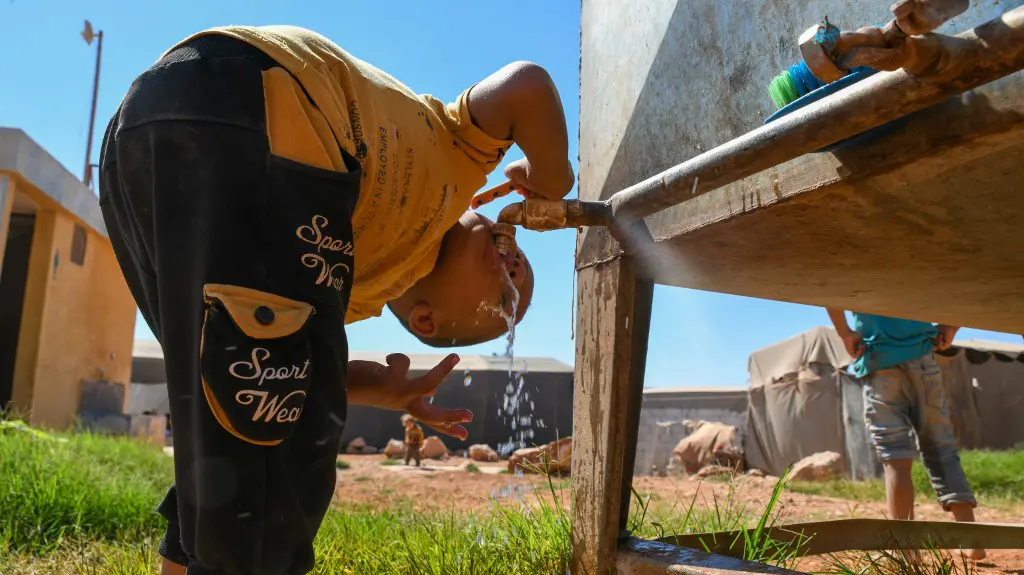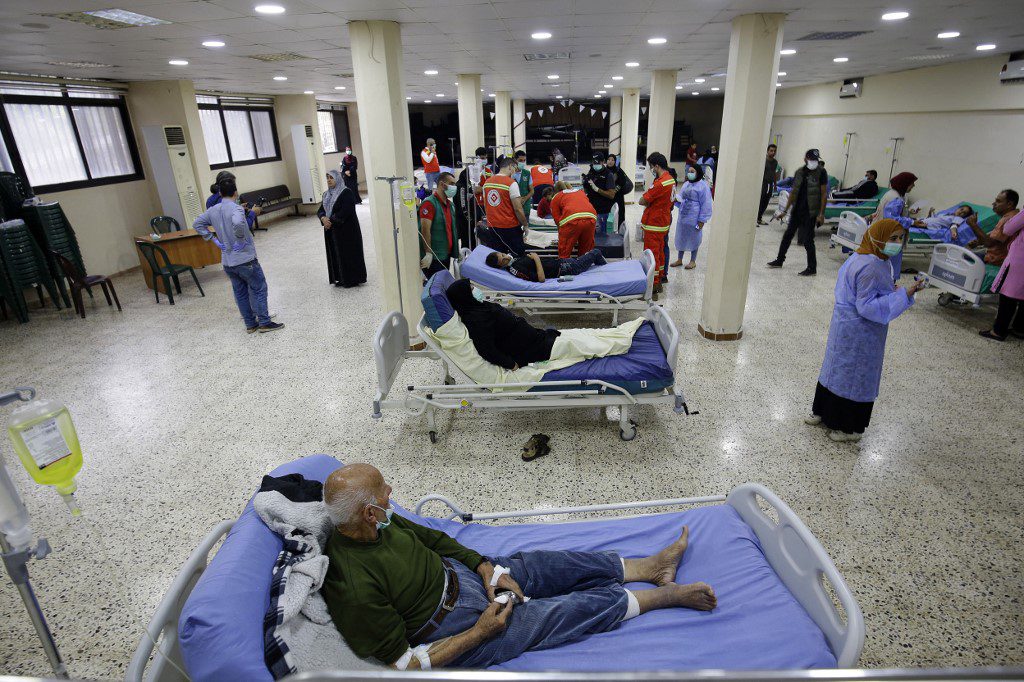
Mouneb Taim
The infectious cholera has started to spread its tentacles in Syria, especially in regions that the regime has no grip on. The World Health Organisation (WHO) detected 20.000 potential carriers of cholera since its outbreak in early September 2022. While the rates of male and female cholera infections are similar, nearly half of the infected do not exceed five years of age.
The WHO confirmed 81 deaths as a result of the cholera infection. The organisation disclosed that most infections were in the northern regions. It is the first outbreak of this disease in Syria since 2008 and 2009, when Deir ez-Zor and Raqqa governorates were ridden with the infection.
Cholera is a highly contagious disease caused by Vibrio Cholerae bacteria, which thrive in stagnant untreated water. The disease is transmitted via the consumption of contaminated food and drinks and causes diarrhoea and vomiting, which quickly lead to dehydration. If a patient does not receive immediate medical care, cholera can be deadly within hours.
Although cholera is a dangerous disease with a high casualty rate, preventative procedures are simple. Measures include sanitising food and drinks, boiling water and adding chlorine, heating meals before eating, and frequent handwashing and sanitising.
Water allocated for human consumption in northern Syria is contaminated and scarce. This is particularly so in areas near the Euphrates and in informal tented camps that do not have access to water. The number of these camps has reached 658.
Additionally, the Syrian Response Coordination Group announced that the humanitarian organisations operating in northern Syria had stopped supplying clean water to 34 newly built camps.
The Response Group said in a recently published statement that, despite its dire situation as thousands of its inhabitants are infected with Covid-19, clean water supplies had stopped reaching Afrin, north of Aleppo.
The group warned all parties involved about the water crisis. The situation is particularly dire given the harsh living conditions and high water prices in many urban and rural areas.
According to the statement, a large segment of the population does not have access to clean water on a regular basis, threatening their social and financial stability. The group also emphasised that the current situation will force the region’s residents to move to areas where they can access sufficient quantities of clean water.
Apparent Concerns
Abd al-Razzaq Mohamed al-Omar lives in the al-Yaman camp in northwest Syria. Like all refugees living in informal tented camps, he is not equipped to cope with cholera.
He told Fanack, “We have huge concerns after the outbreak in our camps. My nephew, who lives in a neighbouring camp, contracted it and became very ill. I hope he recovers, and I fear my children might get infected because we cannot cope with this kind of disease in these harsh conditions.”
Even though insects, such as flies, that might play a role in transmitting the infection have infested the camps, camp authorities have not sprayed pesticides to eliminate the harmful insects.
Syria is facing a water crisis since most water and sewage infrastructure was destroyed as a result of the ongoing conflict since 2011. This situation has forced many to drink contaminated water, particularly from the Euphrates river.
Camp residents complain about the lack of treated water. Abd al-Razzaq describes this situation, “They add unhealthy quantities of chlorine to the water in a primitive way that makes it harmful, especially to children.”
Abd al-Razzaq confirmed that the camp’s residents had done their best to keep the camp and its water reservoirs sanitised after the infection spread. Still, he feels disappointed because the authorities did not respond to the crisis by treating water with chlorine in a healthy manner.
The death count of 2021 was significantly high because of Covid-19, a sight that repeats itself today due to cholera. Regarding the fears of the camps’ residents, Abd al-Razzaq says, “We don’t know what we have to do in case we contract this dangerous infection,” calling on concerned parties to organise awareness meetings to instruct people on how to deal with this disease. He also demanded the concerned parties provide the materials and medicine required to prevent the infection.
The spread of the cholera infection in northern Syria might lead to a catastrophe for numerous reasons, such as its frail medical sector and the lack of infrastructure. The Early Warning, Alert and Response Network’s statistics indicate that 762 camp residents in northwest Syria are infected with cholera.
Local Attempts
Northern Syrians have suffered from a lack of necessary medical services since the start of the crisis. The regime bombarded medical centres in areas beyond its control, prompting many medical professionals to migrate abroad, leaving the destroyed medical sector behind them. This dynamic, perhaps, explains the region’s inability to respond to the outbreaks locally.
In an interview with Dr Mohamad Shahm Makki, director of the Epidemiological Surveillance Laboratory in Idlib, he disclosed his concerns about the cholera infection in the camps to Fanack.
“We fear the probability of a rising infection rate in our region because of the war and the camps’ overpopulation. In general, cholera thrives in overpopulated areas with poor sewerage. Both conditions apply to camps in our region,” he said.
According to Dr Makki, cholera-infected patients will be treated at specialised centres if the infection rate keeps rising. He praised the local efforts to be prepared and cope with such outbreaks.
Still, he called on donor countries to build specialised treatment centres, thereby enhancing the region’s ability to respond to epidemics. He emphasised that they need help from countries with expertise in handling this type of disease, especially countries experienced in sanitary water and sewage treatment.
Previously, the Syrian Response Coordination Group called on the UN, its agencies and donor countries to hasten the implementation of cholera control measures in Syrian camps by providing them with the required tools to control the disease’s spread.
Regional outbreak

In late October 2022, Firass Abiad, the Lebanese minister of health, announced that the cholera infection was rapidly spreading to Lebanon. He confirmed five deaths from the infection at that point, noting the majority of the more than 200 cases in Lebanon were among Syrian refugees.
According to the Cholera Surveillance Report issued by the Lebanese Ministry of Public health on 31 October, 17 people died in Lebanon due to a cholera infection. The total number of suspected and confirmed infections amounted to 1.447.
It is worth mentioning that there are an estimated 1.5 million Syrian refugees in Lebanon, many of whom inhabit camps in the north and al-Bekaa.
Meanwhile, in Jordan, the authorities have sounded the alarm to prepare for a cholera pandemic after discovering several potential infections. According to Jordanian media quoting the Secretary-General of Epidemiological Affairs at the Ministry of Health, Raed al-Shaboul, the ministry has taken the necessary measures to deal with the three potential cases. The Jordanian authorities had already implemented precautionary measures for handling goods, agricultural products, and juices imported from Syria.


